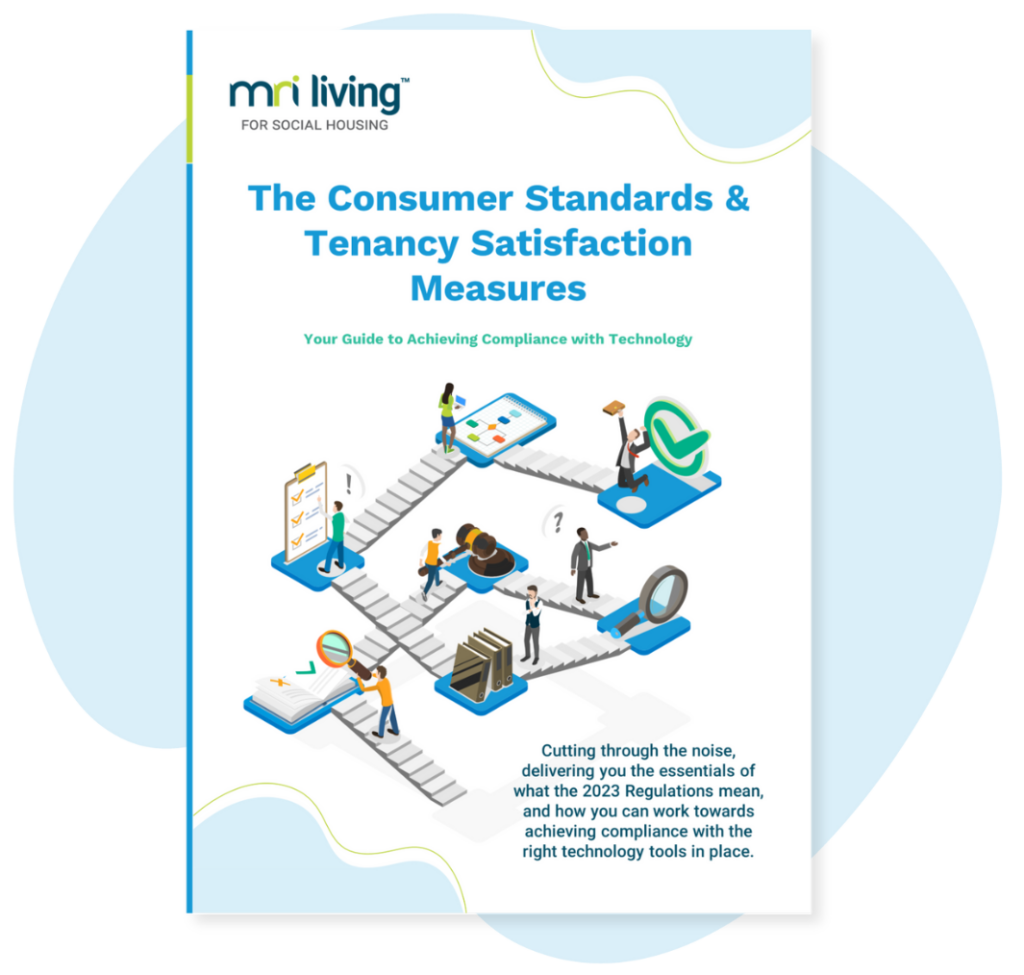The evolution of repairs software
In over 20 years working in the sector, I have witnessed an incredible transformation in how housing providers use technology to manage their repairs. These tools help them achieve efficiencies and serve their communities and staff better. What’s more, there are so many innovations on the horizon.
In my early days of working in repairs, there was no mobile connectivity and the software certainly wasn’t up to scratch. Now, technology has evolved to a point where organisations can harness repairs management for maximum performance for all involved.
How our repairs technology has evolved
One of the MRI products I’ve worked with for some time and have witnessed the evolution of, is AccuServ. The core mission of the system is to provide cost effective performance management across all aspects of repairs and maintenance in the social housing sector.
The solution was created with input from two contractors that ran our stock control solutions. Nearly 20 years on from the release, the concept that we created with those contractors’ insights has stood the test of time! We have always had an active user group and there is no question that the direction the product has taken, has very much been driven by the users of the solution.
When AccuServ was first released, contractors required comprehensive job costings. This was because job invoice values are small – typically at a sales value of around £75 – but there are thousands of jobs per year. Organisations that haven’t got these small jobs under control will see costs spiral.
For Housing Associations, local authorities and contractors, customer satisfaction wasn’t always a key requirement. Now, customer satisfaction is a number one concern. All contracted organisations have had to improve efficiency and cost control while budgets have reduced and costs increased. Yet operationally, they must maintain high levels of customer satisfaction. It’s a balancing act.
Customer Service considerations as part of a seamless workflow
Technology has evolved to a point where organisations can implement real-time tracking of operatives – and this should be utilised to ensure that they can harness maximum efficiencies for themselves, for residents and for providers. This isn’t about tracking operatives to keep tabs on them. What’s important is when an emergency is flagged, for example, the best person can get to that job.
For a number of years, MRI has provided an ‘Uber-style’ service solution for repairs. This software notifies residents when an operative sets out, tracks them and establishes a real-time ETA; resident user experience can improve dramatically.
There are operational benefits too. Direct contact and real-time tracking between operatives and residents reduce costly ‘no-accesses’, saving providers an estimated £80-140 each time. That could be a week’s rent on a home. We’d all rather see that cash spent where it matters, on the repair itself!
Always open to adapting
The market is adapting and evolving constantly and that is what influences the product roadmap. A good example is the mobile solution of AccuServ; we integrated with several market leading solutions for mobile but they all fell short in delivering some critical customer requirements.
Therefore, we took the decision to write our own complete mobile solution from the ground up. This meant the mobile solution is tightly and seamlessly integrated with AccuServ. As part of that product re-write, we engaged directly with many frontline operatives, finding out their likes, dislikes and needs so we could build a solution that suits the real working environment.
2022 and beyond
Looking to the future, there are a lot of innovations we’re excited about, as well as some challenges on the horizon.
Fuel poverty
At the moment, fuel poverty is a primary concern for housing providers. Beyond the quality of life costs for residents, the inability to heat a home adequately will have a detrimental effect on properties structurally. There are going to be serious implications for ageing housing stock.
The high cost of heating a home needs attention. It’s outside of provider or resident control. If you have to choose, you’re going to give the kids a jumper and put food on the table. These issues are going to result in increased repairs costs for the providers and poorer living conditions for the residents, a ‘lose, lose’ situation.
Remote repairs
Something we are really looking forward to is the development of remote repairs. We’re currently looking at augmented reality solutions to understand how we can make this part of our existing repairs offering. This type of technology is currently being utilised to conduct surgery across borders. Soon this will become a reality for easy-to-fix problems in the sector.
For housing, augmented reality tools will allow operatives to talk residents through the remedy process remotely and in real-time, saving operatives time and providers a good sum of money. Using this technology, lesser skilled operatives can also receive training on the job, with expert operatives at hand remotely to guide them through the repair.
Internet of Things
People keep talking about the Internet of Things. Sometimes I view it as a solution looking for a problem, however that time is passing. Applications are going to become more mainstream, appliances like new boilers will all have these technologies built into them. These machines should be able to flag faults to repairs software, as well as the parts that are needed to fix it, driving up first-time fix rates.
Watching how housing is delivered over 20 years from the perspective of repairs has been an education in the power of technology to rapidly transform how services are delivered. I’m looking forward to reflecting on these innovations more in the future – possibly in another 20 years!
If you would like to know more about how AccuServ could achieve seamless workflow in your organisation, get in touch with us at socialhousing@mrisoftware.com
The Consumer Standards and Tenancy Satisfaction Measures: Your Guide to Achieving Compliance with Technology
Cutting through the noise, delivering you the essentials of what the Consumer Standards and Tenancy Satisfaction Measures 2023 Regulations mean, and how you can work towards achieving compliance with the right technology tools in place. New regulatio…

